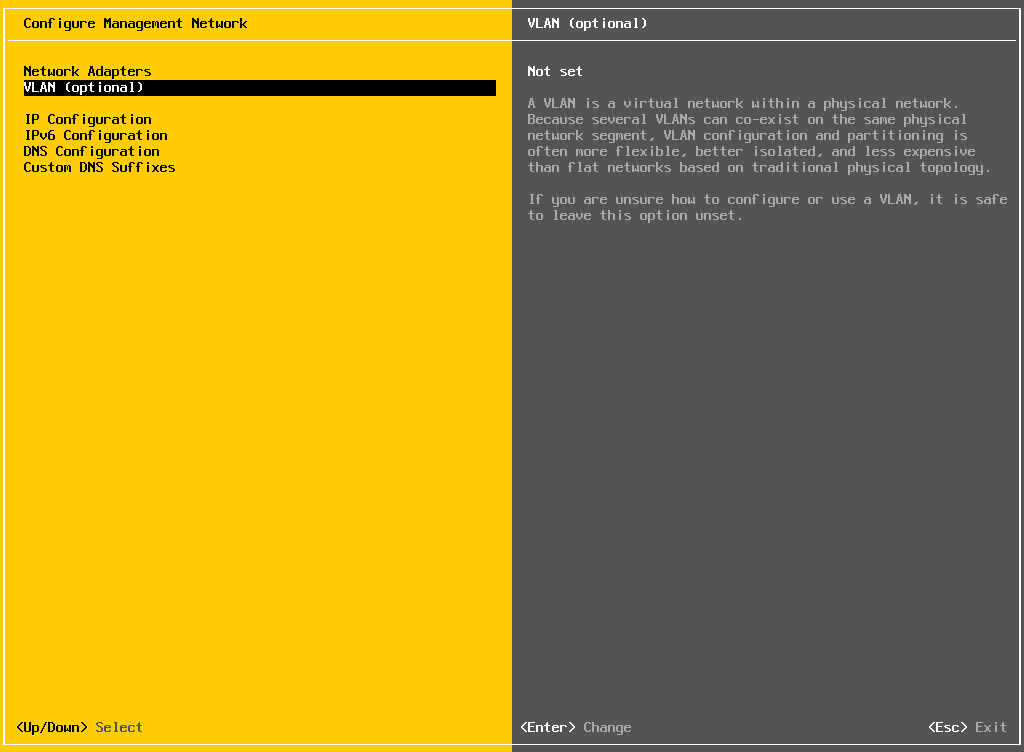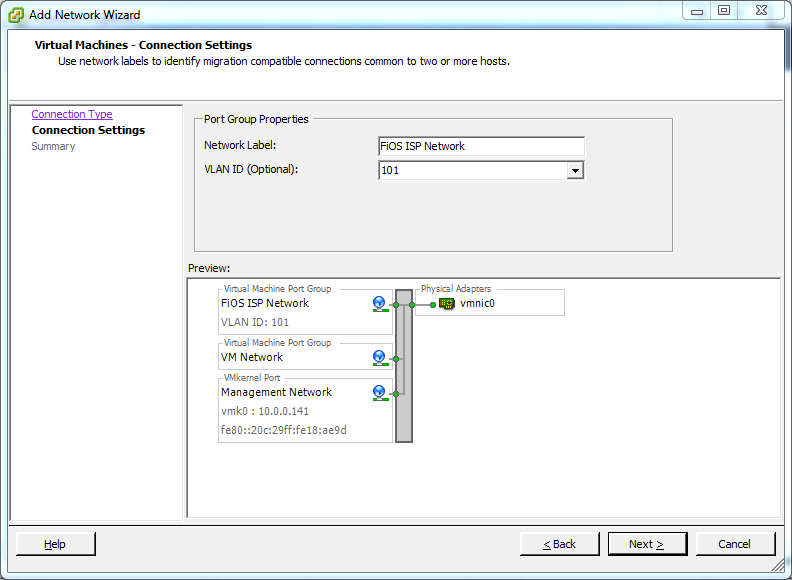FiOS “Three-Router” with VyOS and ESXi, Part 3: Hypervisor Installation and Configuration
There are lots of ESXi installation guides out there. Since I installed on a MacMini6,2, I used the excellent write-up at virtuallyGhetto.
If you aren’t using a Mac Mini you may not need to use any special build of ESXi; the most current version1 can be downloaded at vmware.com as a 60 day evaluation. After 60 days most of the enterprise features are disabled, but the box will still function just fine as a standalone host for your routers.
Once you have your ESXi host installed, log in via the console (Direct Console User Interface, in VMware parlance) with the root password you set during setup. Here you can configure basic networking so that the host can be managed remotely.

When configuring your host in the DCUI, don’t set a VLAN tag. The host will reside on your home network, which is untagged (from the ESXi host’s perspective). This design decision allows you to easily connect the Mac Mini to a consumer-grade switch (or even directly to a computer with a crossover cable) and manage it, which could be useful if your managed switch ever fails.
At this point you can save your changes, which may require a reboot. When the host comes back it should be available at the IP address you set.
To do additional configuration we’ll need to log in with the Windows vSphere Client. If you don’t have a Windows box handy there are other options but they’re out of scope for this article. Summon your nearest VCP for assistance.
Open the client and log in with the IP you just configured and the root credentials you set during ESXi setup.
We need to configure the virtual switch on this host so that the different VLANs can be presented to the right virtual machines on the right virtual NICs. Click on the host in the left pane, then select the Networking link under Hardware.
We need to add port groups for three different networks:
- FiOS ISP Network (VLAN 101)
- Verizon Router Network (VLAN 102)
- Home Network (untagged)
You should see one standard switch, vSwitch0, with a single VMkernel port. Click on Properties next to the switch name and click Add… in the lower-left to add a new port group.
- We are adding a Virtual Machine connection
- Label the network FiOS Public Internet and set the VLAN to 101
- Click Finish

Repeat these steps to create the Home Network (untagged) and Verizon Router Network (VLAN 102) port groups.
Footnotes
-
The most current version of ESXi as of this writing is 5.5. This release has introduced a higher memory requirement of 4 GB to install. If you have more modest hardware, 5.1 might be a better choice as it only requires 2 GB. ↩